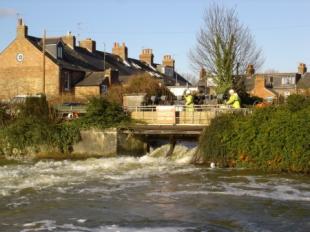Raising money for community renewables
Many viable UK projects to generate renewable electricity are not being financed because of shortages of credit from banks. At the same time, individual savers are only able to get tiny returns on their savings. In recent days a number of schemes for linking the UK surplus from household savings to the deficit in renewable financing have surfaced.
***
Tim Helweg-Larsen presented at the Manchester Report conference. (Disclosure: I was a judging panel member – Chris Goodall.) His scheme for energy bonds focused on the obvious need to bridge the gap between the savings looking for a home among ordinary householders and the shortage of investment funds for large-scale energy projects. He put forward several persuasive schemes for matching cash needs with savers’ money.
In this spirit, Low Carbon West Oxford has developed (July 2009) a portfolio of renewable energy projects that will be funded by local savers and others. It has plans for a micro-hydro plant on the Thames in Osney, just outside central Oxford. In addition, a battery of PV panels will sit on a local warehouse roof and a large wind turbine is going to be sited at a local school.
These schemes have been bundled into a co-operative venture. The idea is that individuals – local and far-away – will buy shares in the venture and eventually get a return from the profits. Lois Muddiman, one of the originators of the scheme, tells me that the financial return to an investment will be about 10% (matching the dividend that I calculated in the article on feed-in tariffs for wind turbines). In the first few years, all the spare cash will be spent on eco-refurbishing the elegant Victorian housing stock in West Oxford, an area that was badly affected by the summer floods of 2007. Later, the co-operative hopes to pay a dividend of about 5% to investors, far more than is currently available from banks.
The projects that the scheme has in its development portfolio are as follows:
| Energy generated per annum (kWh) | Gross income per annum (£) | Gross income with FiT* (£) | Cost (£) | |
|---|---|---|---|---|
| Solar PVs 1 | 9,500 | 2,000 | 5,270 | 50,000 |
| Solar PVs 2 | 40,000 | 9,000 | 22,000 | 225,000 |
| Solar PVs 3 | 112,500 | 25,900 | 62,000 | 600,000 |
| Microhydro | 180,000 | 32,000 | 38,700 | 400,000 |
| 15 kW wind turbine 1 | 26,000 | 5,800 | 6,370 | 50,000 |
| 15 kW wind turbine 2 | 26,000 | 5,800 | 6,370 | 50,000 |
| 394,000 kWh 112 houses' electricity use |
£80,500 | £140,710 | £1,375,000 |
* FiT = feed-in tariff.
Source: West Oxford Community Renewables, a venture of Low Carbon West Oxford.
Lois Muddiman writes about the plans to raise money:
Can you say that you don’t have to live in West Oxford to buy shares? They are available in blocks of 10, 250, 1,000 and 20,000 and cost £1 each. You can request a prospectus by emailing us at lowcarbon.hotmail.co.uk and one will be sent to you. (We are sending them by Royal Mail, so we need home addresses.) Please include the details of our website - which goes live later this week www.lowcarbonwestoxford.org.uk.
As the UK government is now belatedly acknowledging, renewable electricity generation will be encouraged if community groups have the freedom to use local resources to build PV, hydro and wind installations. Low Carbon West Oxford is one of the best community carbon reduction initiatives in the UK and is well placed to develop good generation schemes because of its wonderful reputation in the local community. If all goes well, the co-op will both reduce local emissions by a significant amount and return reasonable returns to investors.
